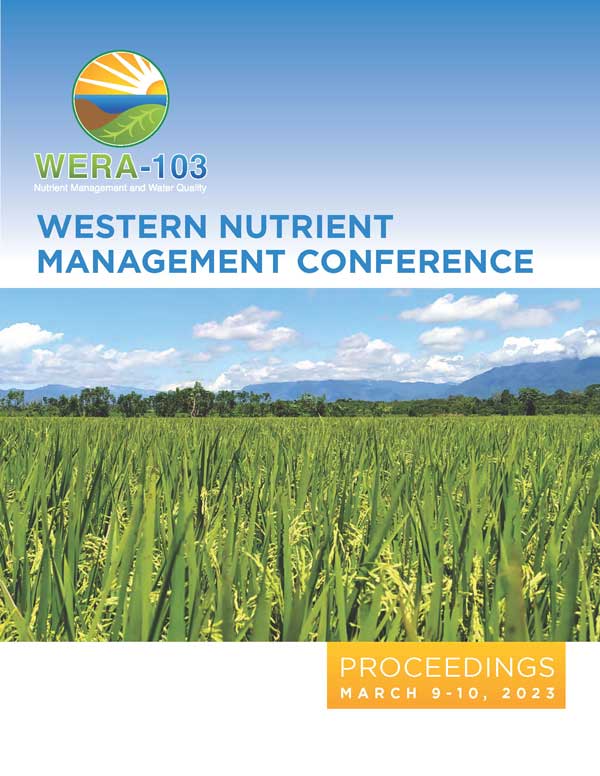Download the Conference Proceedings
Proceedings
Authors
| Filter results6 paper(s) found. |
|---|
1. Nitrogen Management in Small Grains After AlfalfaSmall grains are commonly grown following alfalfa in Utah and the Intermountain West, especially during drought years as small grains require less irrigation than corn. Several studies across the country have shown that corn following alfalfa rarely needs N fertilizer, yet relatively few have evaluated the N needs of small grains. Furthermore, research on the N needs of small grains grown as forage vs. grain are even more sparse. The objectives of this research are to quantify the... C. Pound, M. Yost, E. Creech, G. Cardon, K. Russell, D. Despain, J. Gale, K. Heaton, B. Kitchen, M. Pace, S. Price, C. Reid, M. Palmer, M. Nelson |
2. Micro-nutrients in Alfalfa Production: is There Need/opportunity for Cost Effective Management?The management of soil fertility for optimum alfalfa productivity requires that all nutrient-related limitations be manipulated where warranted and cost-effective. It has been the policy of the Utah State University Analytical Laboratory to not promote soil testing for micronutrient sufficiency based on a lack of general need, historically, for nutrients such as sulfur, boron, zinc and others. This study undertook to accomplish two things, 1) to provide an initial inventory of micronutrient... G. Cardon, J. Barnhill, M. Pace, C. Israelsen, D. Miner, L. Greenhalgh, S. Banks, M. Shao, D. Rothlisberger, S. Olsen, P. Hole |
3. A Low Volume Continuous Gradient Dosing System for Rapid Plant Response ScreeningEarly tolerance experiments required a tedious and time consuming delivery process that additionally limited the number of replications and treatments performed (DeMalach et al., 1996). Many treatment delivery systems have been used in tolerance screening experiments, the more flexible of these being a trickle irrigation system known as the double emitter source (DES), or double drip line system. The techniques of the DES were adapted in this study by providing for a larger number of treatment... A. Hawks, G. Cardon |
4. New Tools in Soil and Manure Test Information Interpretation in UtahAn effort is underway to update the USU Analytical Laboratory’s (USUAL) procedures and data presentation/interpretation capabilities. Modern database management tools and analytical instruments have, in many cases, gone under-exploited in reducing sample turn-around time, in improving data dissemination and interpretation, and in providing research and extension personnel with access to comprehensive historical and current trend data on soil fertility, and manure and plant analysis. This... G. Cardon, J. Kotuby-amacher |
5. Performance of Public and Private Fertilizer Recommendations for Corn, Alfalfa, and Small GrainsThere are many sources that growers utilize to determine fertilizer needs for crops such as private and public labs, crop advisors, and fertilizer dealers. In many cases, these sources provide recommendations for a specific crop that can vary greatly, and the resulting fertilizer and application rates recommended can lead to large differences in costs for the grower. Evaluating the effectiveness and economics of current fertilizer guidelines and recommendations will help growers to make better-informed... M. Yost, M. Baker, J. Gale, E. Creech, G. Cardon |
6. Evaluating Zinc Requirements of Corn, Small Grains, and AlfalfaMany growers and crop advisors in the Intermountain west have recently reported Zn deficiencies in major cereal and forage crops. Further, many common fertilizer blends now include Zn. Most Zn fertilizer guidelines indicate that 5-10 lbs of Zn per acre should be applied when critical soil test Zn levels are less than about 0.8 ppm Zn. These guidelines in Utah and many other states in the region were developed decades ago and need to be reassessed. Therefore, we established Zn response and rate... M. Yost, M. Baker, J. Gale, G. Cardon, E. Creech |
